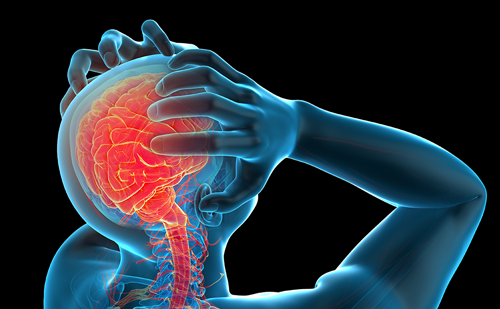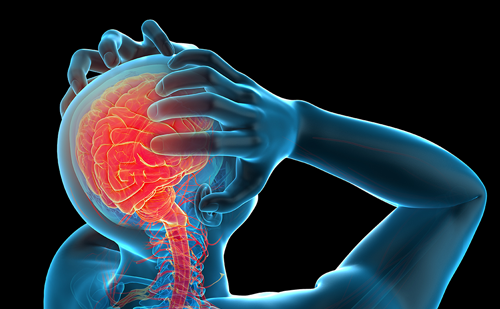Results from a prospective, open-label, head-to-head clinical trial in chronic migraine were presented for the first time at the 18th Congress of the International Headache Society in Vancouver, Canada in September 2017. In an expert interview, lead study investigator John F Rothrock discusses preventative therapies for migraine, the need for new therapies and the clinical relevance of new findings from the FORWARD study.1
Q: At present, what are the most effective preventative therapies for migraine?
For prevention of episodic migraine (EM) we lack much in the way of active comparator clinical trial data to support any one treatment over another, but at least in the adult migraine population topiramate would appear to possess the strongest evidence base for this specific indication. Topamax® is an immediate release (IR) formulation of topiramate that is taken twice daily.
Beta blockers (e.g. metoprolol and propranolol) and antidepressants (e.g. amitriptyline and nortriptyline) are older agents commonly used for migraine prophylaxis. The evidence base supporting this use comes largely from clinical trials whose methodology was flawed relative to current standards, trials which have yielded conflicting results or, in the case of nortriptyline, virtually no objective evidence whatsoever. Metoprolol is an exception; its evidence base is rather thin in terms of clinical trials experience, but what data exist have been encouragingly positive.
For prevention and suppression of chronic migraine (CM), small-scale active comparator trials conducted prior to the FORWARD study1 investigating onabotulinumtoxinA (onabotA) versus topiramate IR have suggested the two therapies have more or less the same efficacy in treating CM, with onabotA being far better tolerated by the subjects involved.
Q: Why are new preventative therapies needed?
As indicated above, there are relatively few therapies of proven value for the prophylaxis of EM, and most of them may produce side effects that limit their utility. For CM, there currently exist only two therapies that can claim a supportive evidence base, and one of them, topiramate, is – at least in its IR formulation – difficult for many patients to tolerate. Put simply, the arsenal of therapies is rather bare and new therapies that are both effective and well tolerated are clearly needed.
Q: Which physiological pathways are potentially useful therapeutic targets in the prevention of migraine?
If all or most migraine involve cortical spreading depression (CSD), then agents that inhibit or terminate CSD could be helpful in preventing migraine or treating it acutely. If all or most migraine ultimately involves electrochemical signalling at the trigeminovascular junction, then agents that target the neuropeptides and receptors integral to conduction of head pain signalling at that junction will effectively “short-circuit” migraine. Theoretically, treatments targeted to inhibit conduction of head pain signal at various relay points along migraine’s biophysiologic pathway (e.g., the trigeminal nucleus caudalis) should be effective.
However, as dozens of genetic permutations exist which may generate the symptom complex we term “migraine”, it seems likely that a variety of biologic roads may lead to this particular Rome. It may be asking too much to anticipate the emergence of a single therapy which will prove effective against all migraine attacks in all migraineurs. To accomplish that lofty goal may require genetic analysis and subsequent “editing”.
Q: Could you tell us a little about the mechanism of action of onabotulinumtoxinA in migraine prevention?
As with most – if not all – therapies for migraine prevention, onabotA’s specific mechanism of action (MOA) in this clinical setting has not been precisely determined, and multiple MOAs may be involved. If its MOA for treating CM is similar to the MOA of botulinum toxin generally and in other indications, the toxin inhibits the transport and consequent release of neuropeptides integral to pain signal transmission at the trigeminovascular junction. This peripheral effect does not exclude the possibility that onabotA also has direct anti-migraine activity within the central nervous system itself.
Q: What have been the findings of the recent clinical study comparing onabotulinumtoxinA to topiramate?
The FORWARD study, comparing onabotA with topiramate IR, demonstrated a strikingly higher rate of treatment discontinuation consequent to adverse events in the subjects randomized to topiramate.1 Mirroring the results of previous small-scale studies and clinical practice generally, a significant proportion of the patients with CM simply found topiramate IR impossible to tolerate. Although the widely disproportionate difference in discontinuation rates made it more difficult to evaluate the relative efficacy of these two treatments when compared to one another, an assessment of clinical effectiveness, with effectiveness representing a blend of efficacy and tolerability, strongly favoured onabotA. From these results, one can only conclude that topiramate IR is a less attractive treatment option than onabotA for the suppression of CM.












